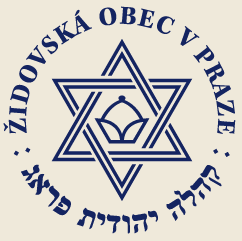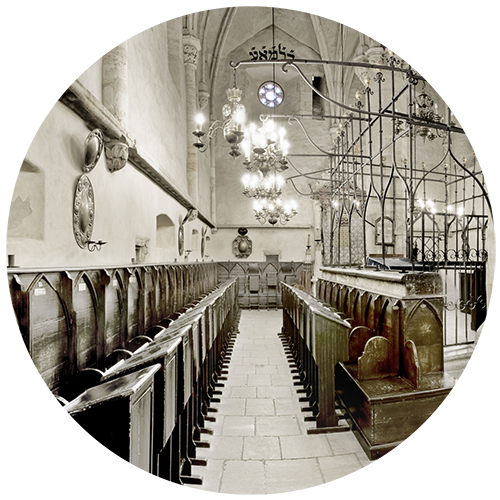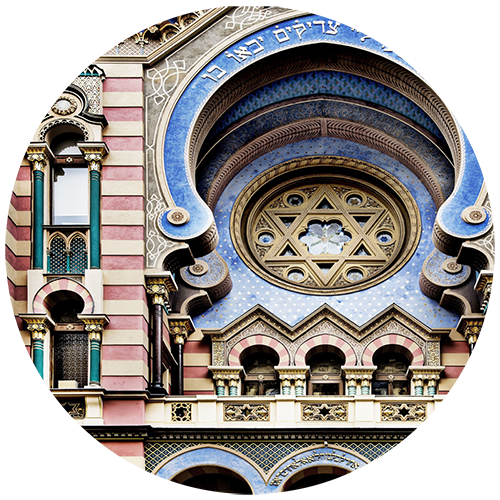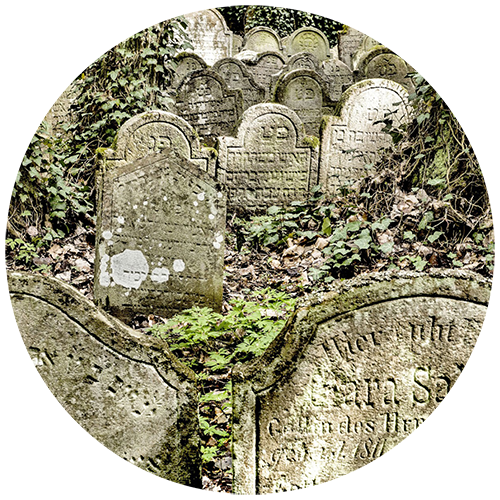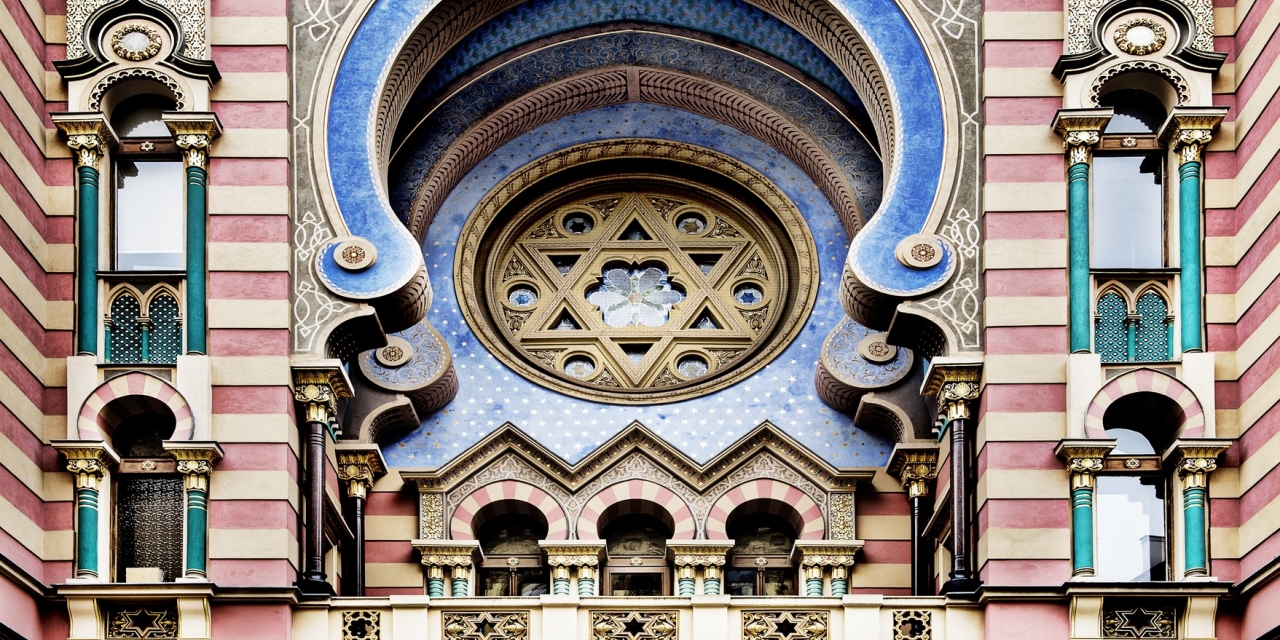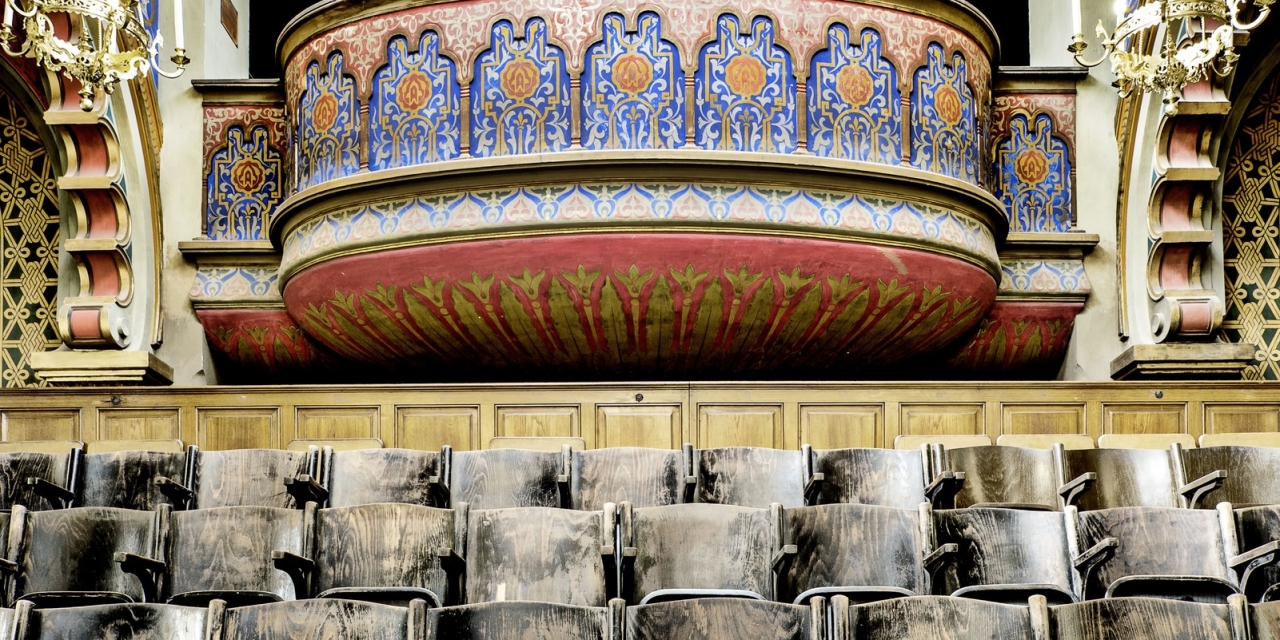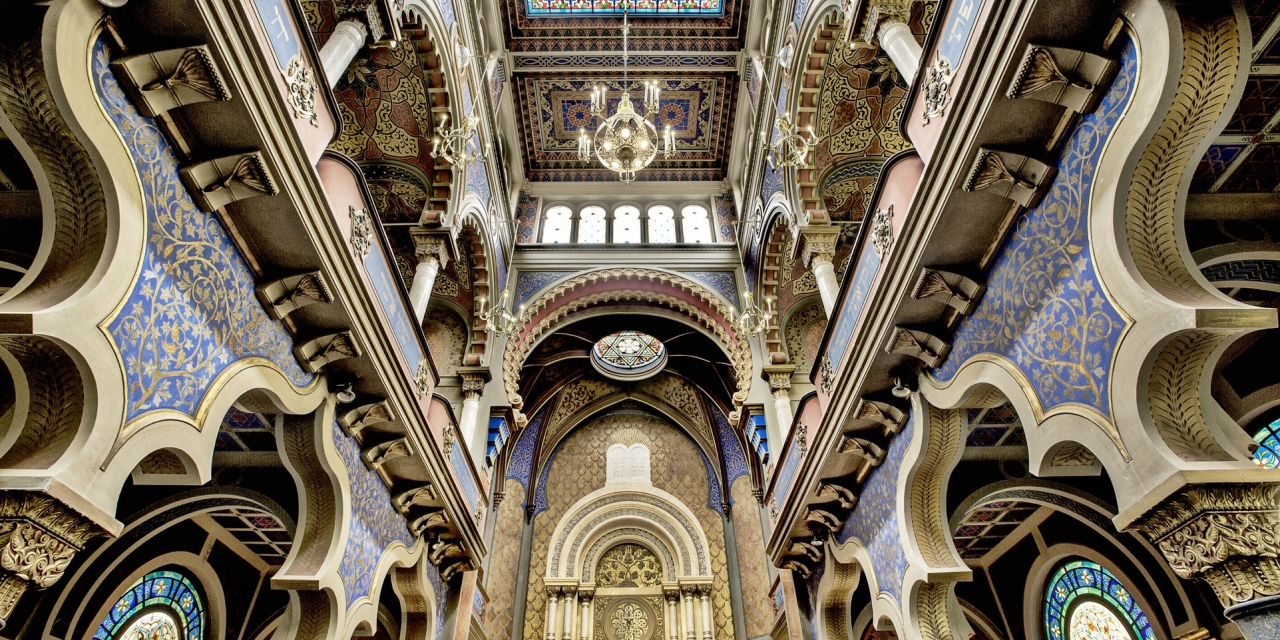Jerusalem Synagogue
Open daily except of Saturdays and Jewish holidays
10:00-17:00
1.6.-30.9. 10:00-18:00
CLOSED 2.-3. 6.
(SHAVUOT)
on-line
Jeruzalémská 7
Prague 1
|
Adults |
150 CZK |
|
Children under 6 |
free |
|
Children under 15 and |
100 CZK |
Reduced entrance fee for visitors with valid ticket to the Jewish Town sites:
|
Adults |
100 CZK |
|
Children under 6 |
free |
|
Children under 15 and |
80 CZK |
The synagogue was built between 1905–1906 by a Viennese architect and an Imperial construction supervisor Wilhelm Stiassny, as a replacement for three Synagogues (the Zigeiner, the Velkodvorská, and the New) destroyed in the years 1898-1906 during the redevelopment. Although the association which took up the challenge of building the Synagogue was founded in 1896, it took ten years before the Synagogue was inaugurated on 16 September 1906. Initially it bore the name of the Jubilee Temple of Emperor Franz Joseph to commemorate the 50th anniversary of his reign, in 1898. After WWI, the present name, the Jerusalem Synagogue, based on the street name where it stands, slowly gained ground. The street name has nothing to do with the Synagogue, however: the street is named after the Church of Jerusalem former chapel of St Henry, nearby.
The Jerusalem Synagogue is distinctive in that it is one of only eight Synagogues built to W. Stiassny’s design, where services are still held. The only interlude was during the war years 1941–1945, when it acted as a repository of seized Jewish property.
Besides its religious role, the Synagogue is a cultural and exhibition venue. The concerts regularly held here let visitors listen to the uniquely preserved original organ by Emanuel Stephen Peter.
This year marks the 80th anniversary of the end of the Second World War - a conflict that claimed over 70 million lives, including the six million Jews murdered in the Holocaust.
But alongside the victims, we must not forget the thousands of Czechoslovak Jews who actively participated in the fight against Nazism. They formed a significant part of the Czechoslovak troops on all fronts - from Great Britain to the Middle East to the Soviet Union. They fought as infantrymen, airmen, doctors, paratroopers, tankers and radio operators. Many were killed, but their courage helped restore freedom to Czechoslovakia.
The exhibition "The Jews in the Resistance 1939-1945" brings together powerful stories of people like:
Otto Smik - fighter pilot
Gertrude Englová - doctor
Rabbi Hanus Rezek - a field rabbi, but also a fellow soldier in the trenches
Chaviva Reik - paratrooper, executed by the Gestapo
The exhibition was prepared by the Military History Institute Prague in cooperation with the Association of Jewish Resistance Fighters and Soldiers and the Jewish Community of Prague.

